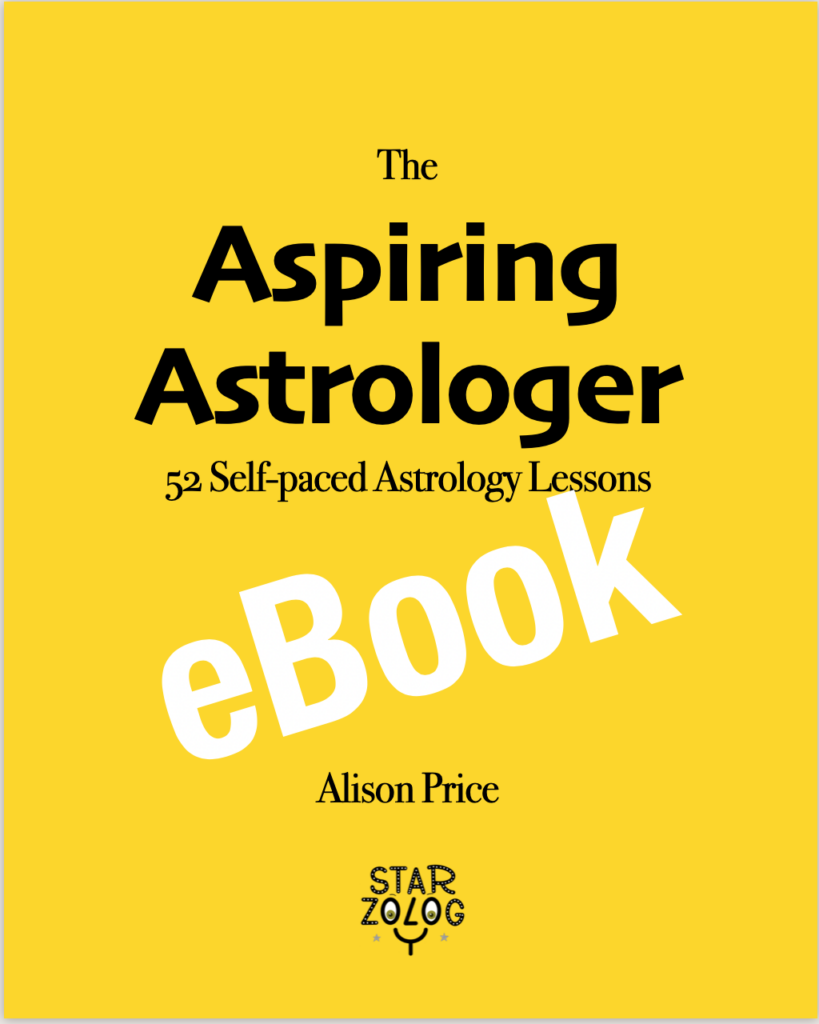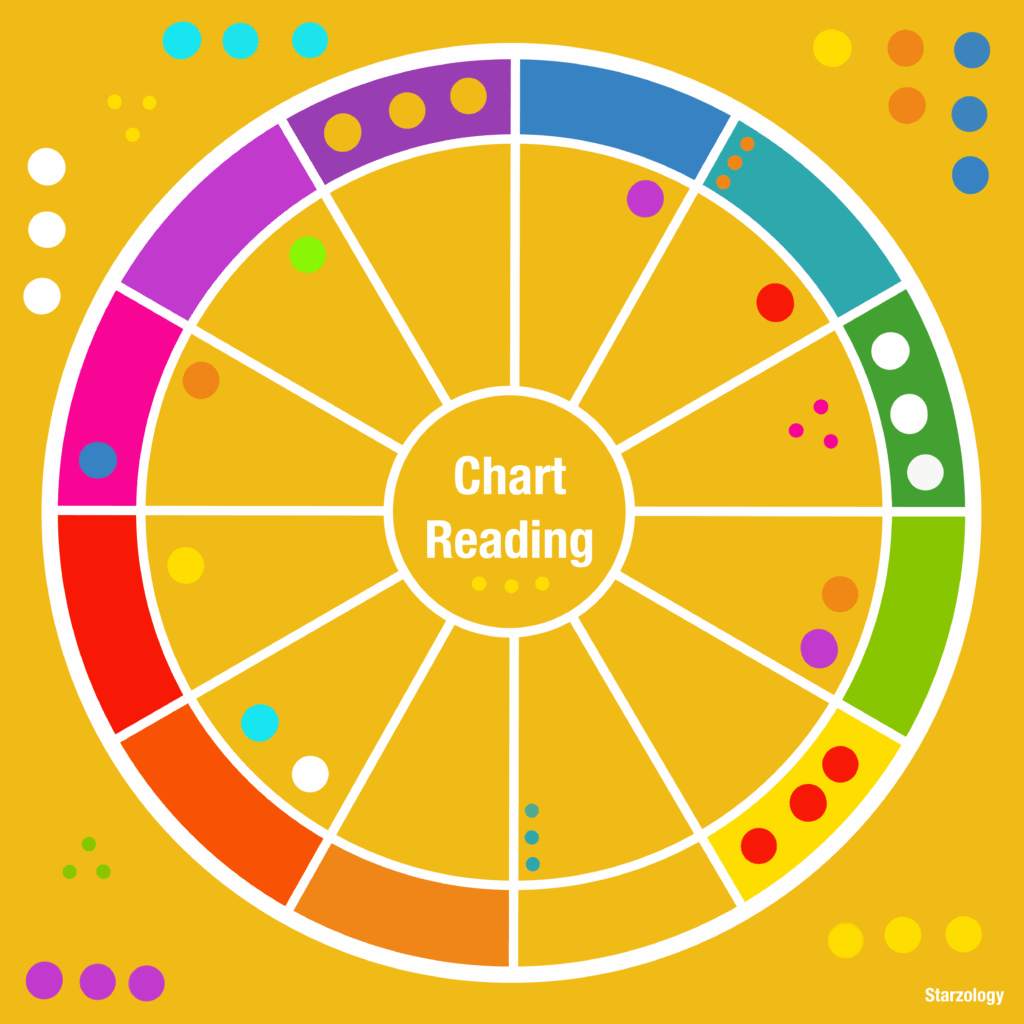In astrology, the 5th HOUSE suggests your creative side. It rules recreation and procreation as well as gambling and the stock exchange.

9th House
Author: Alison Price – Published: May 2025
The 9th House
Influence
Unbelievably, this is going to be the final house in our houses series and it’s the 9th house. This is a succedent house and what this means if you have planets there, they are waiting to be used. In general, this is not a house that steps forward for you, you have to consciously work the energies in it.
The 9th house is one that you tend to get around to eventually after you’ve dealt with the four angular houses of the 1st (self), the 7th (partner), the 4th (home) and the 10th (career). It’s a bit like moving up on Maslow’s hierarchy of needs pyramid. When you got all that angular house stuff sorted out, you move on to other houses and then you may get around to the 9th house.
9th House Chart Placement
9th House Chart Position
Succedent House, Southern and Western hemisphere, third quadrant and third triple division.
Affinities of the Ninth House
Expansion
The ninth house in astrology is all about expansion in many areas like expansion of the mind, the spirit, and your place in the world. It governs higher education, including all adult or tertiary learning that happens at colleges, universities, or through other advanced studies. Any time you earn a diploma, degree, or deepen your understanding of the world through formal education, you’re engaging with ninth house energy.
Legal Matters
This house is also connected to legal matters, particularly those involving judges or higher courts. When you stand before a judge or seek justice in a formal setting, that’s a ninth house experience. It’s not about everyday law enforcement, but the broader systems of law and moral judgment.
Faith
Spiritually, the ninth house rules religion, faith, and how you relate to a higher power. It reflects your beliefs about God or the universe, whether you stay within one tradition or explore different spiritual paths over time. If you’ve changed religions or blended different beliefs, the ninth house will often show that.
Publishing
In the realm of communication, the ninth house rules publishing, whether through traditional means, self-publishing, or working with literary agents. It’s also associated with broadcasting, promotion, and getting your message out to a wide audience.
Travel
Travel falls under the ninth house too, especially long-distance or international travel. Historically, this meant any journey beyond what a horse could ride in a day. Today, it includes all forms of extended travel—by train (earth), airplane (air), ship (water), and even adventurous ways like hot-air balloons (fire). This house opens you to global cultures, foreign languages, and everything cosmopolitan. It’s about widening your worldview.
Life Journey
At its heart, the ninth house speaks to your life’s journey including physically, mentally and spiritually. It reflects your vision for the future, your philosophical outlook, and what gives your life meaning. It points to the direction you’re heading in, not just on a map, but in your soul.

Planets in the 9th House
Planetary Energies
When planets are placed in the ninth house of your birth chart, they influence your relationship with travel, higher learning, spirituality, philosophy, and how you explore the wider world—both physically and mentally. When you have planets are in the ninth house, they color the way you experience creativity, joy, leisure and love. Each planet brings its own energy to this vibrant and playful part of life.
If there are multiple planets in your ninth house, then typically, one planet will be better placed than the others, but not always. Any planet which is the chart ruler, is the most elevated planet or has the highest essential dignity will be more impactful in the 9th house. Planets near the 9th house cusp are more likely to be influential than planets at the end of the house and near the 6th house cusp.
Retrograde
Any 9th house planets which are retrograde will probably at first be reduced in energy. Over time, and as those planet station retrograde by transit each year, you will be able to resist the challenges of those retrograde periods somewhat.
Sun in the 9th House
Travel to find Yourself
When the Sun is in your 9th house, you shine when exploring the world on your own terms. Independent travel, solo adventures, and following your personal quest for truth are deeply fulfilling. You’re drawn to discovering your own beliefs and values, often through experience and exploration.
Moon in the 9th House
Home belongs in faraway places
With the Moon here, you have an emotional connection to foreign lands and cultures. Comfort may come through travel, spiritual exploration, or trying new cuisines. You’re nourished by variety and may feel most at home when you’re far from home.
Mercury in the 9th House
Language is a Doorway to Truth
Mercury here your mind is curious about the world. You’re skilled at learning languages, understanding different belief systems, and engaging in philosophical conversations. You think globally and may enjoy writing, teaching, or studying abroad.
Venus in the 9th House
In Love with the World
With Venus in your 9th house, you find beauty in other cultures and may fall in love while traveling or with someone from a different background. You’re likely to invest money and time into travel, art, or education that expands your horizons. Love and pleasure are tied to adventure and higher learning.
Mars in the 9th House
Fights for truth and justice
Mars indicates that you’re passionate about justice, truth, and standing up for your beliefs. This placement gives energy to travel and a desire to take action in matters related to law, ethics, or education. You may advocate for change in global or philosophical systems.
Jupiter in the 9th House
The World is Your Classroom
This is Jupiter’s natural home, and it thrives here. You’re an eternal student of life, always seeking meaning through travel, philosophy, or religion. Optimistic and open-minded, you grow through exposure to other cultures and belief systems.
Saturn in the 9th House
Wisdom is Earned with Time and Discipline
Saturn in the 9th you take higher education seriously and may excel in structured learning. While you might face early challenges with faith or belief, over time you develop a grounded and disciplined philosophy. You respect traditions and laws that guide society.
Uranus in the 9th House
Breaks boundaries to Discover New Beliefs
With unusual Uranus in the 9th you have unconventional views and may explore alternative philosophies or technologies. Sudden insights and a strong drive for freedom shape your beliefs. Learning might happen in unexpected ways—online, through innovation, or while breaking the mold.
Neptune in the 9th House
Faith is Found in Dreams and Visions
Neptune in the ninth Your spiritual life is deep and often mystical. You may be drawn to dreams, symbols, and higher ideals. Travel might feel like a spiritual calling, and you could be inspired by the arts, meditation, or a path of compassionate service.
Pluto in the 9th House
Unearths Truth in the Shadows of Knowledge
Pluto transforms You’re a powerful seeker of truth. Your beliefs may transform throughout life as you uncover deeper layers of knowledge. Research, investigation, and intense study are tools for your personal evolution. You may also be drawn to exploring taboo or hidden philosophies.
Chiron in the 9th House
Heals Others by Guiding Them Towards Meaning
Chiron here indicates you carry wisdom that comes from your own experiences with wounding and healing around belief, education, or spiritual truth. You’re a natural teacher and healer, especially for those seeking meaning or struggling with their own path in life.
Direct Forecasting
9th House Transits
When planets transit your 9th house, they temporarily activate the 9th house themes in your life.The more planets that transit at once the more complex the likely outcomes are.Typically, the Sun, Mercury and Venus will pass through your 9th house close together each year around the same time.

Book Recommendations
Here are a few astrology house themed books which you may like:
- The Astrological Houses by Bruno and Louise Huber.
- The Twelve Houses by Howard Sasportas.
- The House Connection by Karen Hamaker-Zondag.
Extend Yourself Further
Forecast
If you are ready then let’s try a little forecasting. In your astrology journal please do the following:
- Find the next planet to transit your 9th house.
- Note the date the planet enters and leaves your 9th house.
- List the dates this transiting planet conjoins any of your 9th house planets.
- Write an interpretation for the transit of this planet, consider the planet itself, the two or three signs it passes through whilst in the 9th house, the conjunctions (with dates) and the nature of your 9th house planets or points themselves (500 words per transiting planet).
Overarch
Growth House
In essence, the ninth house is a very busy house with lots going on that stretch you in different ways.
More on Houses
Here are a few more articles about the astrological houses.
- Houses
- Triple Division Houses
- People in your the Houses
- The 1st House
- The 2nd House
- 2nd House Planets
- The 3rd House
- 3rd House Planets
- The 4th House
- The 5th House
- The 6th House
- 6th House Planets
- The 6th House and Herb Gardens
- The 8th House
- The 9th House
- The 10th House
- The 11th House
- The 12th House
- Money Houses

Pin this to read later
Author Bio
Alison Price: Professional Astrologer
Alison helps you uncover your individual creativity and lead a fulfilling life using your own astrology. She shares her wisdom from the heart with a touch of humor. She offers Consultations for everyone and Coaching for Aspiring Astrologers.
If you’d like to get in touch with Alison, you can reach out to her via email at starzology@gmail.com.
More Articles
If you enjoyed this post, you may like some more astrology related articles from our blog.

Astrology Houses
Discover more about the 12 astrological houses in a birth chart. Find out about types of houses and angular, succeedent and casdent houses.

Starzlife Free Newsletter
Welcome to “The Starzologer” ideas, insights and inspiration for creative, artistic
astrologers to keep the astro conversation going.





















